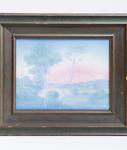 E.T. Hurley for Rookwood Pottery
E.T. Hurley for Rookwood Pottery Scenic Vellum Plaque
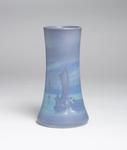 Fred Rothenbusch for
Fred Rothenbusch for Rookwood Pottery
Scenic Vellum Harbor Vase
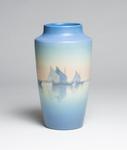 Carl Schmidt for Rookwood Pottery
Carl Schmidt for Rookwood Pottery Vellum Harbor Vase
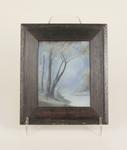 Ed Diers for Rookwood Pottery
Ed Diers for Rookwood Pottery Scenic Vellum Plaque
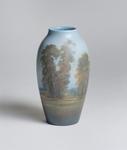 Ed Diers for Rookwood Pottery
Ed Diers for Rookwood Pottery Scenic Vellum Vase
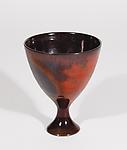 Gertrud and Otto Natzler
Gertrud and Otto Natzler Ceramic Vase
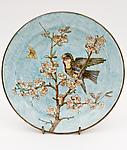 John Bennett
John Bennett Ceramic Charger
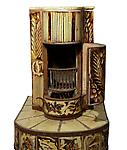 Henry Varnum Poor
Henry Varnum Poor Ceramic Stove
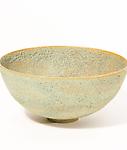 Gertrud and Otto Natzler
Gertrud and Otto Natzler Ceramic Bowl
Ed Diers for Rookwood Pottery
Scenic Vellum Vase
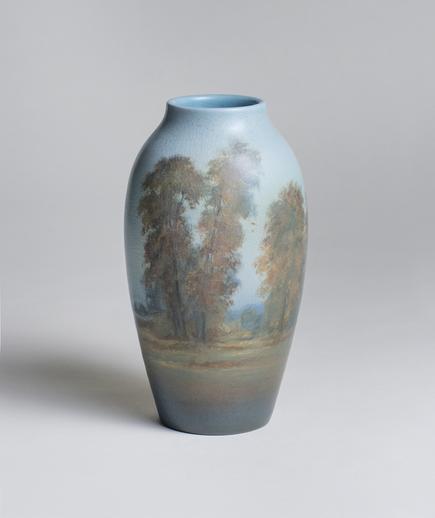
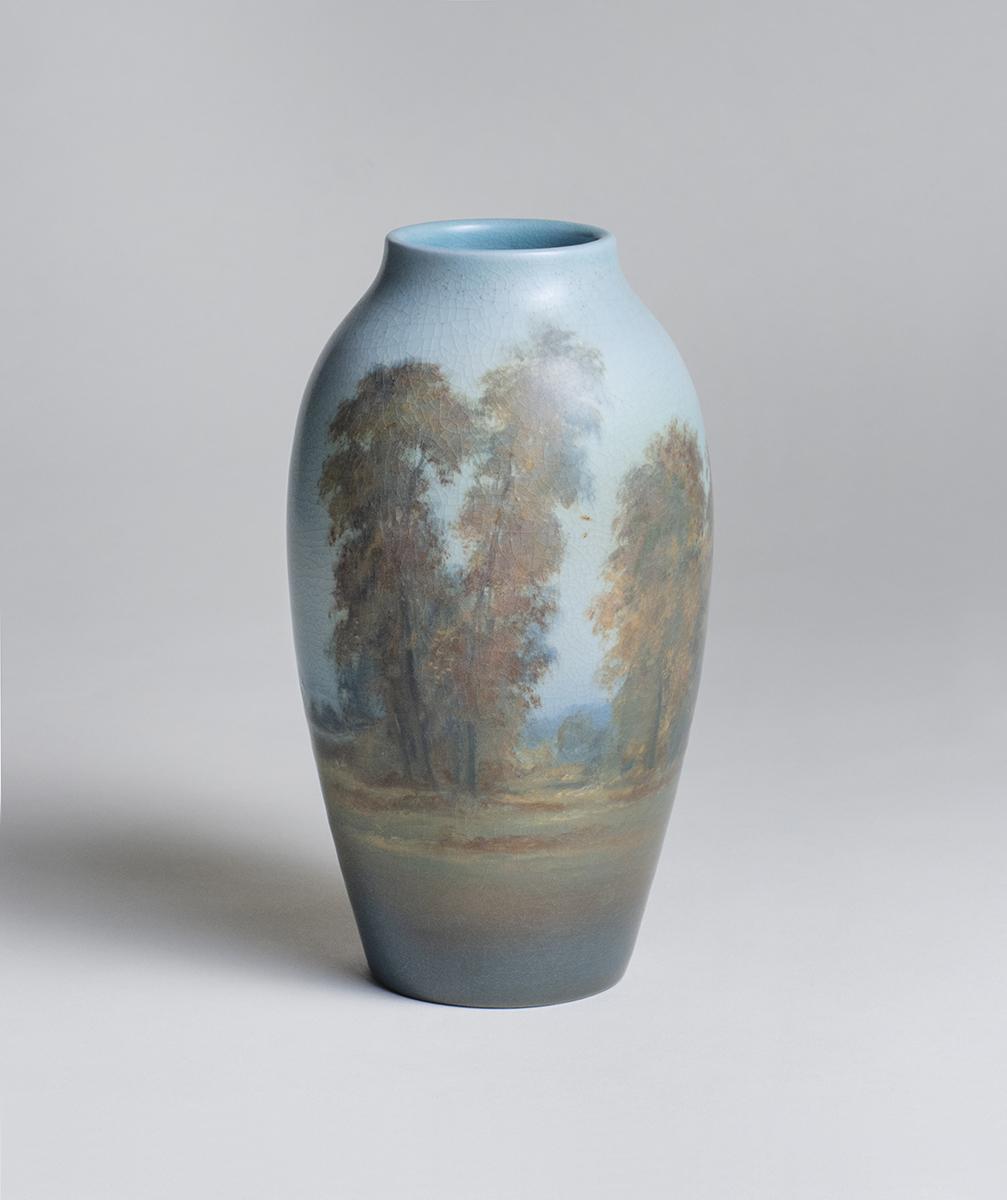
American, 1916
Founded in Cincinnati, Ohio by Maria Longworth Nichols in 1880, Rookwood Pottery gained international recognition early in its history and is still widely considered America’s finest art pottery. The firm enjoyed widespread success almost from its inception, winning a gold medal at the 1889 Paris World's Fair and participating in numerous World’s Fairs where pieces were sold to major museums both at home and abroad.
In 1904 Rookwood introduced the Scenic Vellum glaze, a hybrid between the transparent gloss glaze and a matte finish, a finish which won the firm yet another grand prize at the 1904 World’s Fair in St. Louis. The nature of the glaze lent itself to scenes that reflected the American Tonalist movement: quiet landscapes marked by hazy atmospheres, a stream or pond bordered by trees, and scenes depicting shifting quality of light.
This vase, decorated by Ed Diers, utilizes the vellum glaze to full effect to showcase a quintessential American landscape in its fall finery: a group of massive trees, in rich hues of autumn gold, litter a vast plain with their fallen leaves. In the distance, glimpsed beyond the trees, snow-capped mountains rise up to frame the vista.
Diers was born and raised in Cincinnati, Ohio, training at the Industrial Art School and the Cincinnati Art Academy. He worked for Rookwood Pottery for several decades, specializing in scenes of the nearby Ohio River valley and the American West; his work is widely recognized today.
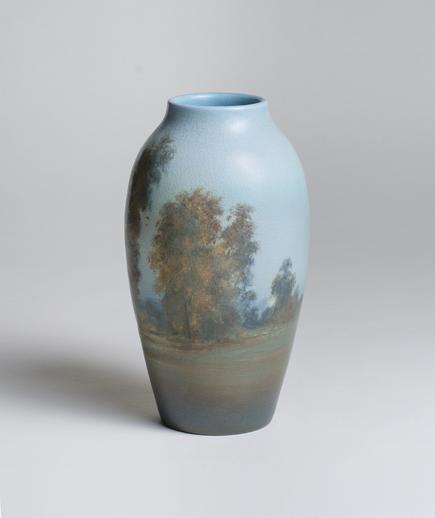
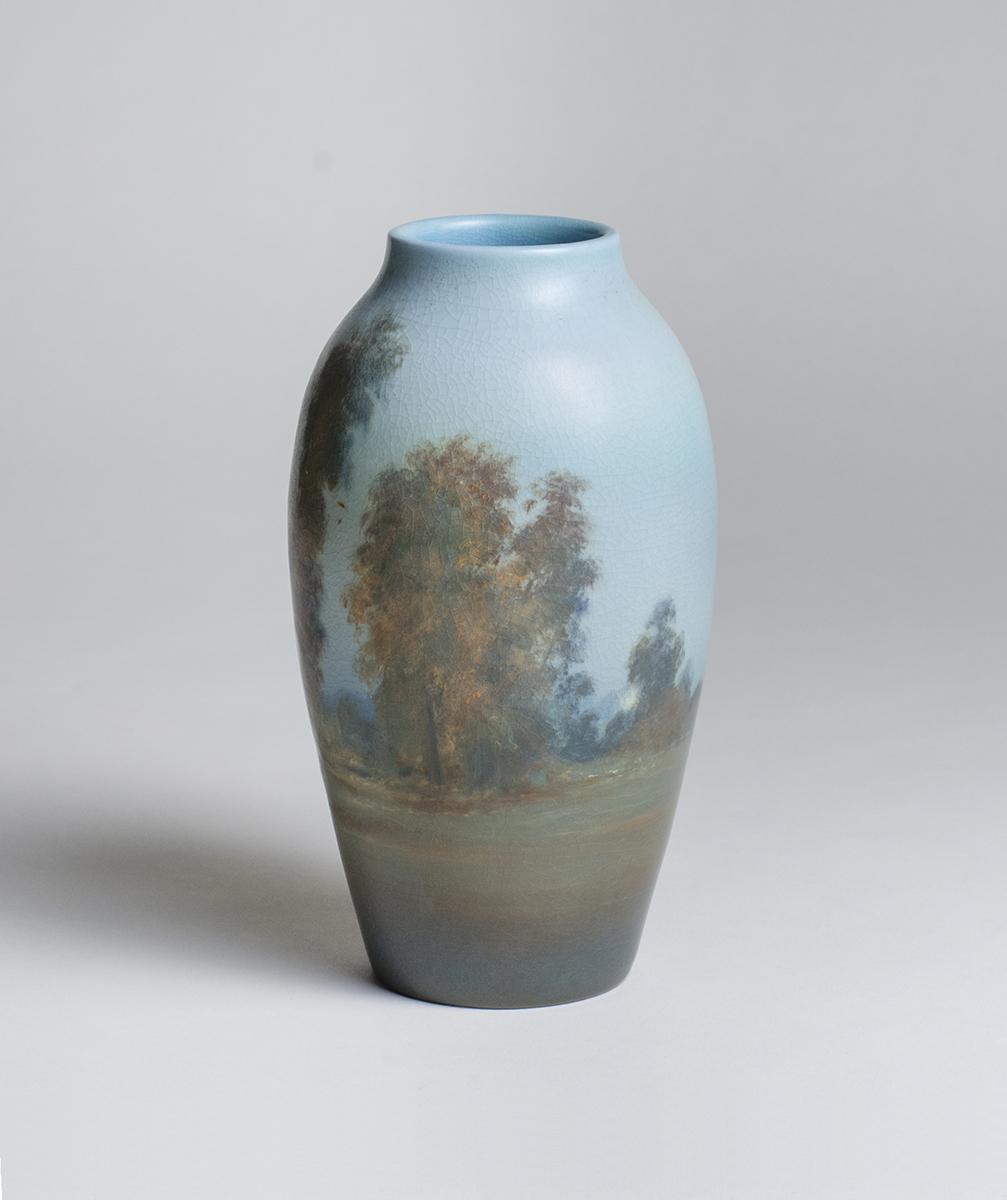
American, 1916
Founded in Cincinnati, Ohio by Maria Longworth Nichols in 1880, Rookwood Pottery gained international recognition early in its history and is still widely considered America’s finest art pottery. The firm enjoyed widespread success almost from its inception, winning a gold medal at the 1889 Paris World's Fair and participating in numerous World’s Fairs where pieces were sold to major museums both at home and abroad.
In 1904 Rookwood introduced the Scenic Vellum glaze, a hybrid between the transparent gloss glaze and a matte finish, a finish which won the firm yet another grand prize at the 1904 World’s Fair in St. Louis. The nature of the glaze lent itself to scenes that reflected the American Tonalist movement: quiet landscapes marked by hazy atmospheres, a stream or pond bordered by trees, and scenes depicting shifting quality of light.
This vase, decorated by Ed Diers, utilizes the vellum glaze to full effect to showcase a quintessential American landscape in its fall finery: a group of massive trees, in rich hues of autumn gold, litter a vast plain with their fallen leaves. In the distance, glimpsed beyond the trees, snow-capped mountains rise up to frame the vista.
Diers was born and raised in Cincinnati, Ohio, training at the Industrial Art School and the Cincinnati Art Academy. He worked for Rookwood Pottery for several decades, specializing in scenes of the nearby Ohio River valley and the American West; his work is widely recognized today.
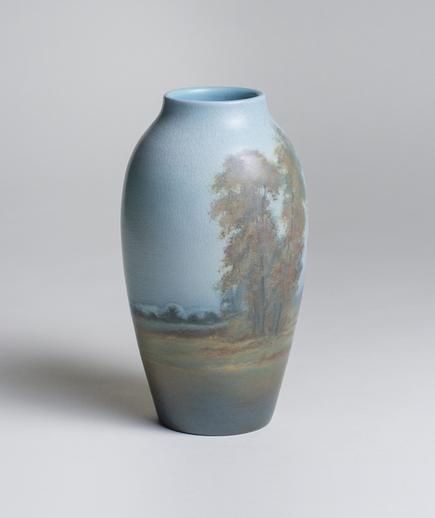
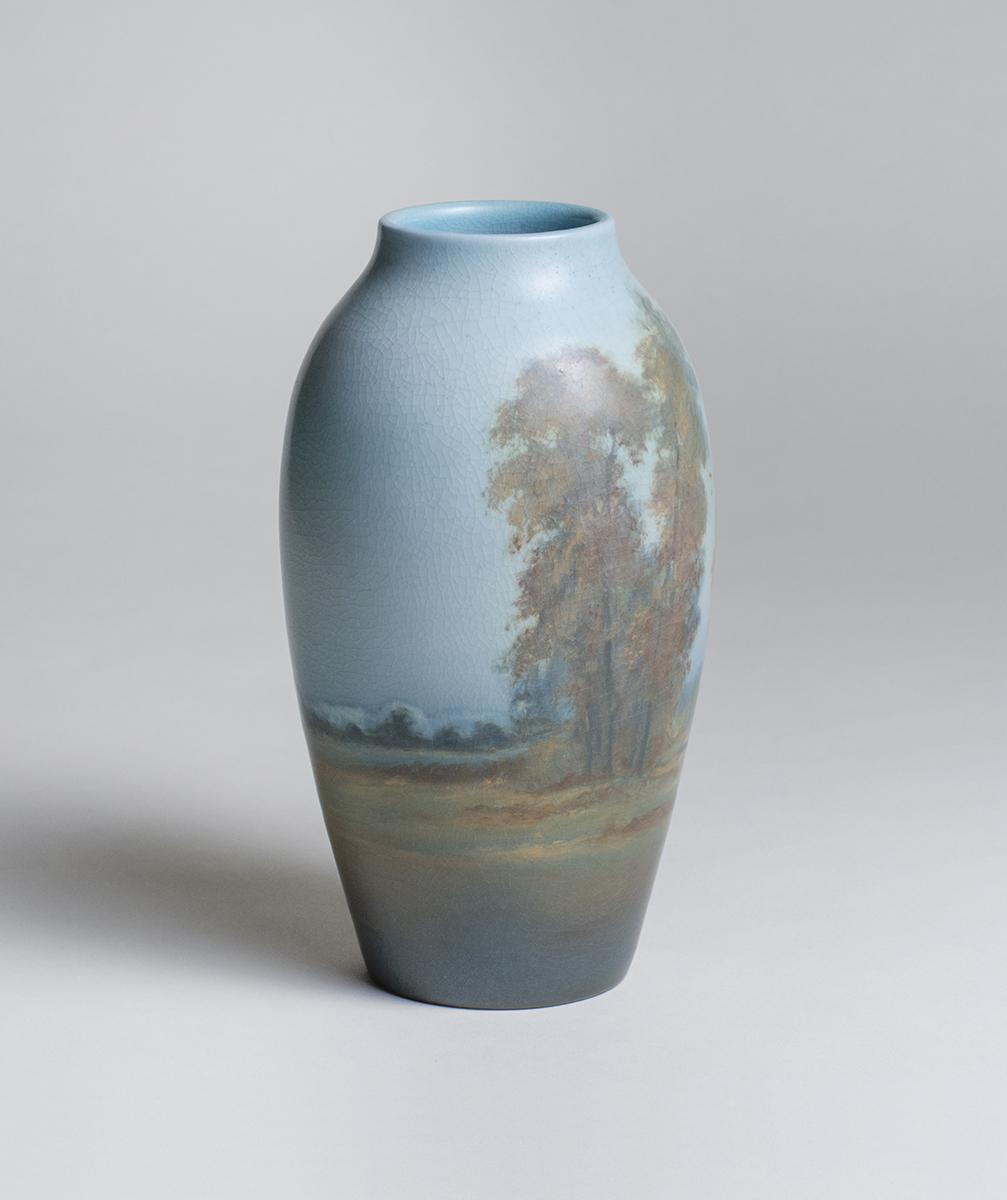
American, 1916
Founded in Cincinnati, Ohio by Maria Longworth Nichols in 1880, Rookwood Pottery gained international recognition early in its history and is still widely considered America’s finest art pottery. The firm enjoyed widespread success almost from its inception, winning a gold medal at the 1889 Paris World's Fair and participating in numerous World’s Fairs where pieces were sold to major museums both at home and abroad.
In 1904 Rookwood introduced the Scenic Vellum glaze, a hybrid between the transparent gloss glaze and a matte finish, a finish which won the firm yet another grand prize at the 1904 World’s Fair in St. Louis. The nature of the glaze lent itself to scenes that reflected the American Tonalist movement: quiet landscapes marked by hazy atmospheres, a stream or pond bordered by trees, and scenes depicting shifting quality of light.
This vase, decorated by Ed Diers, utilizes the vellum glaze to full effect to showcase a quintessential American landscape in its fall finery: a group of massive trees, in rich hues of autumn gold, litter a vast plain with their fallen leaves. In the distance, glimpsed beyond the trees, snow-capped mountains rise up to frame the vista.
Diers was born and raised in Cincinnati, Ohio, training at the Industrial Art School and the Cincinnati Art Academy. He worked for Rookwood Pottery for several decades, specializing in scenes of the nearby Ohio River valley and the American West; his work is widely recognized today.
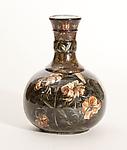 John Bennett
John Bennett 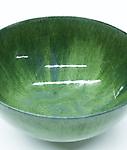 Gertrud and Otto Natzler
Gertrud and Otto Natzler